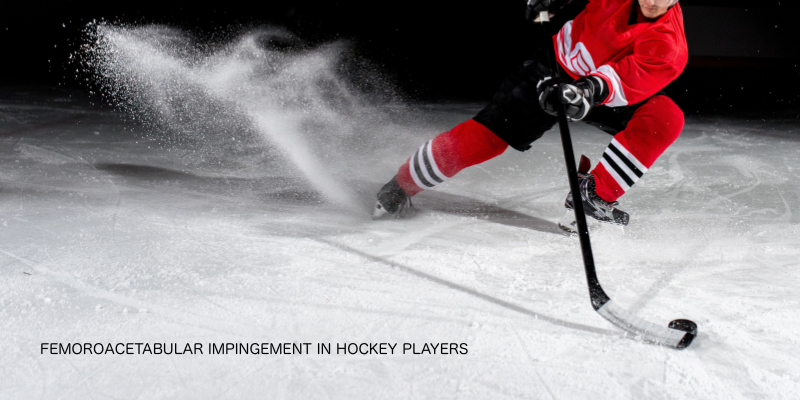By Dr. Patrick Payne
QubeCore Sports & Rehab Chiropractor
Hockey players put their hips through a lot. Every stride, pivot, and crossover demands strength, control, and range that few other sports can match. Over time, all that repetition – especially in deep skating positions – can take its toll.
One common issue is Femoroacetabular Impingement (FAI). Simply put, it’s when extra contact happens in the hip joint, which can limit movement and cause discomfort.
What Is FAI?
The hip is a ball-and-socket joint – the femoral head (ball) fits into the acetabulum (socket). FAI occurs when the shape of either part leads to abnormal contact during movement.
- Cam impingement – the ball is slightly misshapen, often developing during adolescence.
- Pincer impingement – the socket covers too much of the ball, pinching the joint.
- Mixed – features of both cam and pincer.
Not everyone with FAI morphology experiences pain. Problems usually appear when joint structure, movement patterns, and training load combine in a way the body can’t tolerate.
Why Hockey Players Are at Risk
Hockey players spend a lot of time in deep hip flexion, internal rotation, and abduction — exactly the positions that increase impingement risk. Studies show that over two-thirds of elite hockey players have cam-type hip morphology. Many are asymptomatic, but training volume, mechanics, and recovery habits influence whether pain develops.
Symptoms to Watch For
- Pinching or deep ache in the front of the hip or groin
- Discomfort when skating, tying skates, or sitting for long periods
- Limited hip mobility, especially internal rotation
- A catching or blocking sensation during certain movements
Managing FAI
Most players respond well to conservative care:
- Modify load – avoid positions that aggravate pain, but don’t stop moving altogether.
- Strength and movement control – focus on glutes, hamstrings, and core, as well as pelvic control.
- Manual therapy – helps reduce stiffness and improve mobility so rehab exercises can be more effective.
- Gradual return to skating – progress from light movement to full stride and high-intensity drills while monitoring symptoms.
Prevention and Long-Term Considerations
For younger players, cross-training and varied movement during adolescence may reduce excessive bony adaptation. For all players, consistent mobility work, strength balance, and recovery strategies help keep hips healthy.
Takeaway
FAI is common in hockey players but doesn’t have to limit performance. Load management, strength, and proper movement are key. If hip or groin discomfort is affecting your skating, a thorough assessment and individualized plan can help you move – and skate – pain-free.
QubeCore Sports & Rehab offers Chiropractic services in North Vancouver for a wide range of concerns. To book your appointment with Dr. Patrick Payne, call 604.210.2274 or simply book online by clicking HERE.
References
- Agricola R, et al. “Cam impingement of the hip — a risk factor for hip osteoarthritis.” Nat Rev Rheumatol.
- Philippon MJ, et al. “The prevalence of cam-type femoroacetabular deformity in elite ice hockey players.” Am J Sports Med.
- Kemp JL, et al. “Physiotherapy rehabilitation for femoroacetabular impingement.” J Orthop Sports Phys Ther.
- Frank JM, et al. “Prevalence of femoroacetabular impingement morphology in asymptomatic athletes.” Am J Sports Med.
